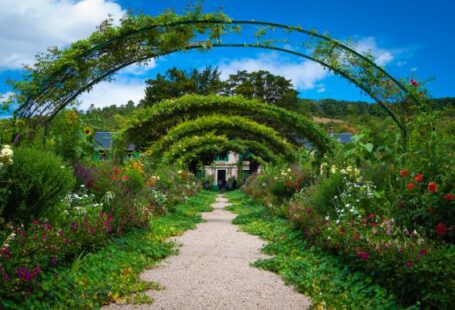Japanese gardens are known for their tranquility, beauty, and harmonious design. These gardens have been cherished for centuries in Japan, and now, you can bring the essence of a Japanese garden into your own home. Creating a Japanese garden at home can provide a peaceful and serene environment, and also serve as a reflection of your personal taste and style.
Understanding the Elements
Before you embark on creating your own Japanese garden, it’s important to understand the key elements that make up these beautiful spaces. Japanese gardens typically incorporate elements such as rocks, gravel, water features, plants, and carefully placed ornaments. Each of these elements serves a specific purpose in creating a balanced and serene atmosphere.
Choosing the Right Space
When creating a Japanese garden at home, it’s important to choose the right space. Japanese gardens are often designed to be viewed from a specific vantage point, such as a porch or a window. Consider the layout of your home and choose a space that will allow you to appreciate the beauty of your garden from indoors as well.
Creating a Sense of Balance
Balance is a crucial aspect of Japanese garden design. Achieving a sense of balance involves careful placement of elements such as rocks, plants, and ornaments. The goal is to create a visually pleasing composition that feels harmonious and peaceful. Pay attention to the scale and proportion of each element to ensure a balanced design.
Incorporating Water Features
Water features are a common element in Japanese gardens, as they symbolize tranquility and the flow of life. Consider adding a small pond or a flowing water feature to your garden design. The sound of trickling water can create a soothing and calming atmosphere.
Choosing the Right Plants
Plants play a significant role in Japanese garden design. Selecting the right plants is crucial to achieving an authentic and serene space. Japanese gardens often feature plants such as bonsai trees, bamboo, moss, and flowering shrubs. Research the specific needs and characteristics of each plant to ensure they thrive in your garden.
Embracing Minimalism
Japanese gardens are known for their minimalist design. Embrace simplicity and avoid cluttering your garden with too many elements. Focus on creating clean lines and open spaces, allowing the natural beauty of each element to shine. Remember, less is often more when it comes to Japanese garden design.
Cultivating Zen
A Japanese garden is not just a physical space, but also a reflection of the Zen philosophy. Cultivate a sense of Zen in your garden by creating a space that encourages mindfulness and contemplation. Incorporate seating areas where you can sit and meditate, and surround yourself with natural elements that evoke a sense of peace and serenity.
Maintaining Your Garden
Once you have created your Japanese garden, it’s important to maintain it to ensure its longevity and beauty. Regularly prune and trim plants, clean water features, and remove any debris. Japanese gardens require attention and care, but the rewards are well worth the effort.
In conclusion, creating a Japanese garden at home can be a rewarding and enriching experience. By understanding the key elements of Japanese garden design and embracing simplicity and balance, you can transform your space into a tranquil oasis. Remember to choose the right plants, incorporate water features, and cultivate a sense of Zen. With careful planning and maintenance, you can enjoy the beauty and serenity of a Japanese garden right in your own home.





